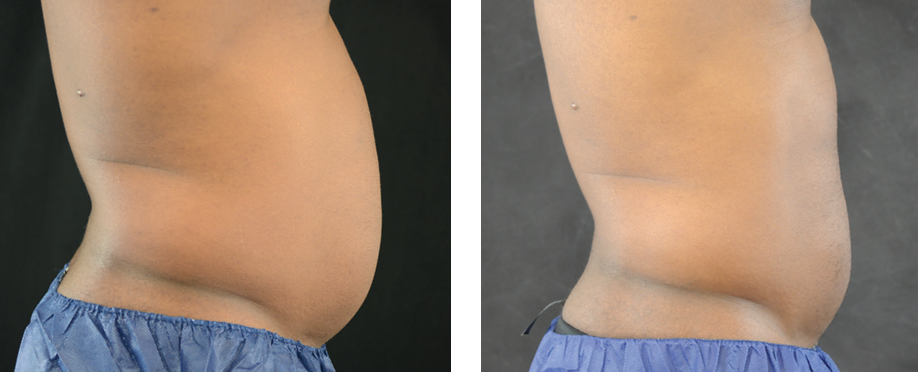- Acne
- Actinic Keratosis
- Aesthetics
- Alopecia
- Atopic Dermatitis
- Buy-and-Bill
- COVID-19
- Case-Based Roundtable
- Chronic Hand Eczema
- Chronic Spontaneous Urticaria
- Drug Watch
- Eczema
- General Dermatology
- Hidradenitis Suppurativa
- Melasma
- NP and PA
- Pediatric Dermatology
- Pigmentary Disorders
- Practice Management
- Precision Medicine and Biologics
- Prurigo Nodularis
- Psoriasis
- Psoriatic Arthritis
- Rare Disease
- Rosacea
- Skin Cancer
- Vitiligo
- Wound Care
Publication
Article
Aesthetic Authority
Management and Reporting COVID-19 Vaccine Filler Reactions
Author(s):
Arianne Shadi Kourosh, MD, MPH, and Joe Niamtu, III, DMD, discuss adverse event reporting resources for COVID-19 vaccine filler reactions and the potential treatments when they occur.
This is part two of a two-part series.
Part 1: Learning From COVID-19 Vaccine Filler Reactions
Experienced injectors have likely seen these reactions before from other immune system triggers and know how to manage them using antihistamines, anti-inflammatories and, in some cases, systemic steroids in short course, she says.
Additionally, she says, physicians should continue to encourage patients to get vaccinated in accordance with public health needs while continuing to stay vigilant of potential reactions and treatments.
Staying up to date and getting involved in vaccine reaction and adverse event reporting are key.
Currently, dermal filler reactions have been related only to the Moderna COVID-19 vaccine.3
This could change as more data emerges during mass vaccination efforts.
Medical knowledge is only as good as the data reported, Kourosh says.
Providers and patients can use the institutional reporting systems in place to report reactions, including CDC’s Vaccine Safety (v-safe)4 website, which helps consumers report adverse reactions to the vaccine with their smartphones. That same page also has links to other vaccine safety reporting resources, including the Vaccine Adverse Event Reporting System (VAERS).5
The American Academy of Dermatology also houses a COVID-19 registry on its website.6
One Practice’s Reality
Joe Niamtu III, DMD, an oral and maxillofacial surgeon in Midlothian, Virginia, says his practice performs many dermal filler injections, but has yet to see a filler reaction from the COVID-19 vaccine.
“My personal take on it is this [reaction] affects a small number of people,” he says. “But we must understand these reactions if filler patients present with inflamed, painful or hardened areas.”
Niamtu explains to patients the potential risk of immunogenic response with the vaccine and recommends they space it, and other immune system triggers, at least 2 weeks before or after having dermal filler injections.
The only course of action Niamtu has doubts about treating filler reactions post–COVID-19 vaccination with oral steroids.
As for treatment options available for these reactions, he is hesitant to use oral steroids.
“I’m skeptical about that,” he says. “Steroids are a potent anti-inflammatory and the whole purpose of this vaccine is to set up an inflammatory response, more or less. You do not want to immunosuppress the vaccine. It has to do its job.”
References
- Rice SM, Ferree SD, Atanaskova Mesinkovska N, Shadi Kourosh A. The art of prevention: covid-19 vaccine preparedness for the dermatologist. Int J Womens Dermatol. Published online January 2021:S2352647521000083
- Beleznay K, Carruthers JDA, Carruthers A, Mummert ME, Humphrey S. Dermatol Surg. 2015;41(8):929-939. doi: 10.1097/DSS.0000000000000418
- Avram M, Bertucci V, Cox SE, Jones D, Mariwalla K. American Society for Dermatologic Surgery Guidance Regarding SARS-CoV-2 mRNA Vaccine Side Effects in Dermal Filler Patients. Based on information available as of 28 December 2020. https://www.asds.net/Portals/0/PDF/secure/ASDS-SARS-CoV-2-Vaccine-Guidance.pdf
- V-safe After Vaccination Health Checker. V-safe After Vaccination Health Checker | CDC. Last updated February 6, 2021. Accessed February 24, 2021.
- Vaccine Adverse Event Reporting System (VAERS). VAERS | Vaccine Safety | CDC. Last reviewed September 11, 2020. Accessed February 24, 2021.
- COVID-19 Dermatology Registry. COVID-19 dermatology registry (aad.org). Accessed February 24, 2021.

Newsletter
Like what you’re reading? Subscribe to Dermatology Times for weekly updates on therapies, innovations, and real-world practice tips.




























